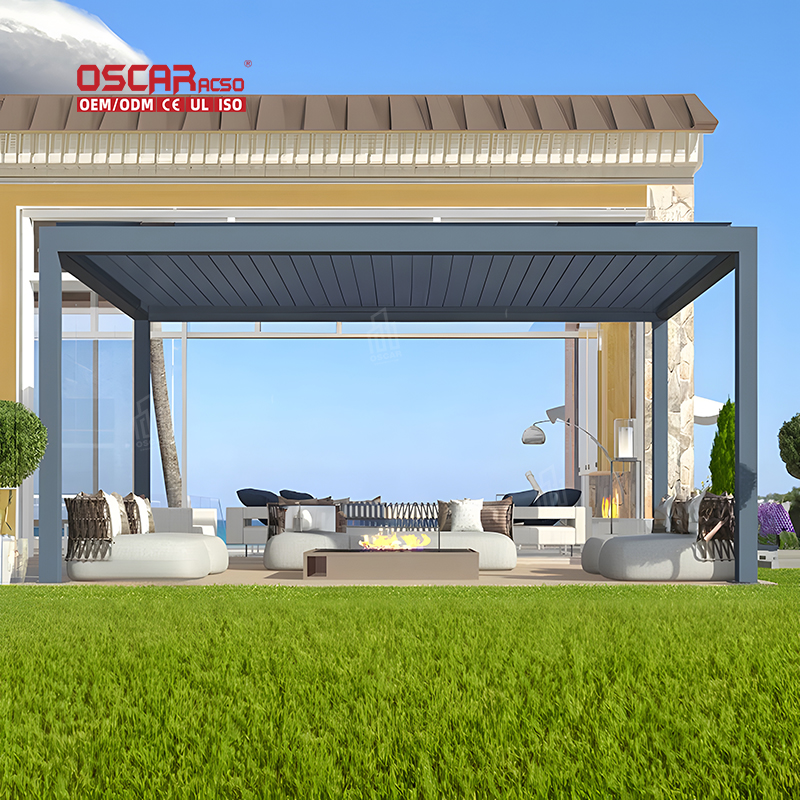Steel Pergola Rust Truth, Unlock Longevity with Smart Protection
Will a steel pergola rust? 🤔 The straightforward answer is yes, steel is inherently prone to rust when exposed to mo...
.jpg)
Will a steel pergola rust? 🤔 The straightforward answer is yes, steel is inherently prone to rust when exposed to moisture and oxygen. However, this is not the end of the story! Modern manufacturing and proactive maintenance can create a robust defense, making a steel pergola a stunning and durable choice for your outdoor space. It’s all about understanding the causes and implementing the right protective measures.
Why Steel is Susceptible to Rust
Rust is a form of corrosion that occurs when iron in the steel reacts with oxygen in the presence of water or moisture. This electrochemical process causes the metal to deteriorate over time.
The environment plays a huge role in how quickly this happens:
- •
Coastal/High-Humidity Areas: Salt air is a major accelerator of corrosion. Moisture and salt together create a highly conductive electrolyte that speeds up the rusting process dramatically.
- •
Industrial/Urban Settings: Airborne pollutants, such as sulfur dioxide and nitrogen oxides, can mix with moisture to form acidic solutions that eat away at protective coatings and the metal itself.
- •
Areas with High Rainfall or Sprinklers: Consistent exposure to water without proper drying time will keep the steel damp, creating ideal conditions for rust to form.
How to Prevent Rust and Protect Your Investment 🛡️
The good news is that several highly effective methods can shield your steel pergola from the elements. A combination of these strategies offers the best protection.

Protective Coatings are Your Best Friend
Most modern steel pergolas come with a factory-applied finish. Look for:
- •
Powder Coating: A durable, dry finish applied electrostatically and then cured under heat. It creates a thick, uniform layer that is resistant to chipping, scratching, and fading. This is a very common and effective first line of defense.
- •
Galvanization: This process involves coating the steel in a protective layer of zinc. The zinc acts as a sacrificial anode, meaning it will corrode before the steel underneath does. Galvanized steel can offer decades of protection.
The Power of Paint and Stain
For added protection or touch-ups:

- •
Use a high-quality, rust-inhibiting primer on any bare steel before applying paint.
- •
Choose exterior-grade paints or stains specifically formulated for metal. Reapply as needed, typically every few years, depending on wear and climate.
Design and Maintenance Wisdom
- •
Ensure Proper Water Runoff: A good design won’t allow water to pool on flat surfaces.
- •
Immediate Touch-Ups: If you notice a scratch or chip in the protective coating, sand the area lightly and apply a touch-up paint promptly to prevent moisture from reaching the bare steel.
- •
Regular Cleaning: Wash your pergola periodically with mild soap and water to remove dirt, debris, and bird droppings that can trap moisture and degrade coatings.
Rust Prevention Methods Comparison
Prevention Method | How It Works | Best For | Longevity Expectancy |
|---|---|---|---|
Powder Coating | Electrostatically applied dry powder, cured with heat for a hard, protective layer. | All climates, excellent for aesthetic appeal and general weather resistance. | 15-20 years with proper care |
Galvanization | Coats steel in a protective zinc layer that sacrifices itself to prevent rust on the base metal. | Harsh environments, coastal areas, high-humidity regions. | 20-50+ years |
Paint/Stain | Liquid coating that creates a barrier against moisture and oxygen. Requires primer. | DIY touch-ups, adding color, refreshing existing protection. | 5-10 years before needing reapplication |
What If Rust Already Appears? 🔍
Don’t panic! Catching rust early is key.
- 1.
Assess the Damage: Is it surface-level rust or deep pitting?
- 2.
Surface Rust: Use a wire brush or sandpaper to scrub the area thoroughly until you reach bare, clean metal. Wipe away all dust.
- 3.
Apply Primer: Use a rust-inhibiting primer on the exposed area.
- 4.
Repaint: Apply a matching metal paint, ensuring it overlaps with the existing coating to seal the area completely.
For extensive rust that compromises the structural integrity, it’s wise to consult a professional to assess if the section needs reinforcement or replacement.
.jpg)
Personal Insight: Is a Steel Pergola Right for You?
Choosing a steel pergola is a decision that weighs its undeniable strengths—modern aesthetics, structural integrity, and resistance to fire and insects—against its maintenance reality.
From my perspective, a steel pergola is an excellent investment for those who appreciate a modern, sleek look and have a moderate maintenance mindset. It’s not a “set it and forget it” structure like some materials, but the maintenance is far less frequent and intensive than the annual sealing required for wood.
The key is to buy quality from the start. A pergola made with powder-coated or galvanized steel will offer far better long-term performance than a cheaper, poorly finished alternative. It’s a testament to the idea that upfront investment in quality materials and coatings pays dividends in longevity and reduces hassle down the line.
Ultimately, if you live in a harsh coastal environment, be prepared for more vigilant upkeep, or consider investing in a highly corrosion-resistant aluminum pergola. For drier climates, a well-protected steel pergola can be a virtually worry-free centerpiece for your outdoor living space for decades.


